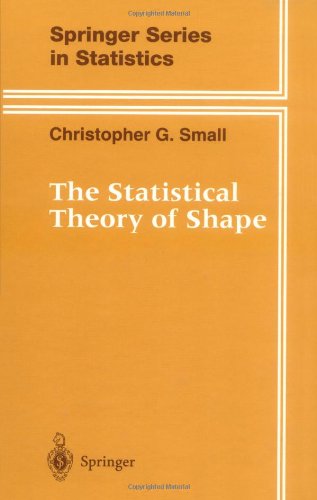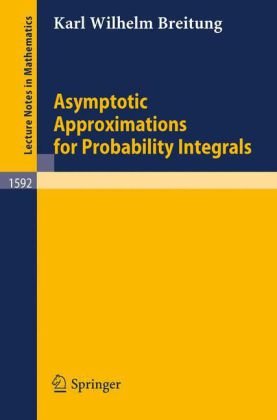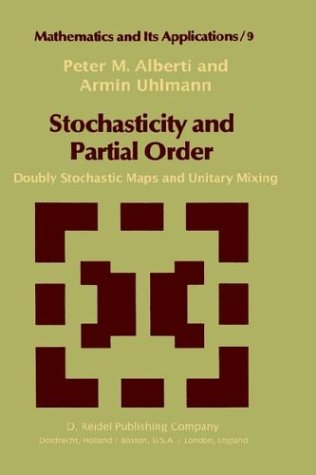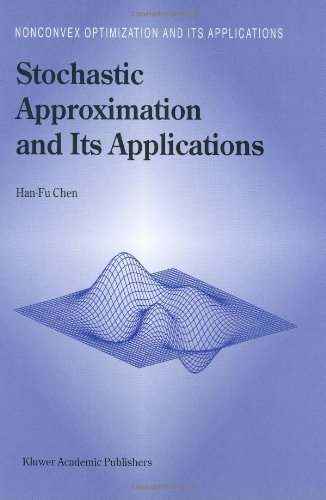Christopher G. Small0387947299, 9780387947297
Table of contents :
Contents……Page 5
Preface……Page 3
1.1 Background of Shape Theory……Page 9
1.2 Principles of Allometry……Page 12
1.3 Defining and Comparing Shapes……Page 14
1.4.1 A Simple Example in One Dimension……Page 22
1.4.2 Dinosaur Trackways From Mt. Tom, Massachusetts……Page 24
1.4.3 Bronze Age Post Mold Configurations in England……Page 28
1.5 The Problem of Homology……Page 32
1.6 Notes……Page 34
1.7 Problems……Page 35
2.1.2 Affine Transformations……Page 37
2.1.4 Unitary Transformations……Page 38
2.1.5 Singular Value Decompositions……Page 39
2.1.6 Inner Products……Page 40
2.1.7 Groups of Transformations……Page 41
2.1.9 Similarity Transformations and the Shape of Sets……Page 42
2.2.1 Homeomorphisms and Diffeomorphisms……Page 44
2.2.2 Topological Spaces……Page 45
2.2.3 Introduction to Manifolds……Page 46
2.2.4 Topological and Differential Manifolds……Page 47
2.2.5 An Introduction to Tangent Vectors……Page 49
2.2.6 Tangent Vectors and Tangent Spaces……Page 52
2.2.7 Metric Tensors and Riemannian Manifolds……Page 55
2.2.8 Geodesic Paths and Geodesic Distance……Page 56
2.2.9 Affine Connections……Page 58
2.2.11 New Manifolds From Old: Product Manifolds……Page 59
2.2.13 Derivatives of Functions between Manifolds……Page 60
2.2.14 Example: The Sphere……Page 62
2.2.15 Example: Real Projective Spaces……Page 63
2.2.16 Example: Complex Projective Spaces……Page 67
2.2.17 Example: Hyperbolic Half Spaces……Page 70
2.4 Problems……Page 74
3.1 The Sphere of Triangle Shapes……Page 76
3.2 Complex Projective Spaces of Shapes……Page 84
3.3.1 Introduction……Page 86
3.3.2 Riemannian Submersions……Page 91
3.4 Principal Coordinate Analysis……Page 94
3.5 An Application of Principal Coordinate Analysis……Page 99
3.6.1 Singular Values and the Poincaré Plane……Page 102
3.6.2 A Generalization into Higher Dimensions……Page 106
3.6.3 Geodesic Distance in UT(2)……Page 111
3.6.4 The Geometry of Tetrahedral Shapes……Page 112
3.7.1 Thin-Plate Splines……Page 113
3.7.2 Local Anisotropy of Nonlinear Transformations……Page 117
3.7.3 Another Measure of Local Shape Variation……Page 119
3.9 Problems……Page 121
4.1.1 Sample Spaces and Sigma-Fields……Page 124
4.1.3 Statistics on Manifolds……Page 125
4.1.4 Induced Distributions on Manifolds……Page 126
4.1.5 Random Vectors and Distribution Functions……Page 127
4.2 The Geometric Measure……Page 128
4.2.2 Example: Volume in Hyperbolic Half Spaces,……Page 130
4.3.2 Change of Variables Formulas……Page 131
4.4 Invariance and Isometries……Page 132
4.4.2 Example: Isometries of Real Projective Spaces……Page 134
4.4.3 Example: Isometries of Complex Projective Spaces……Page 136
4.5.2 Helmert Transformations……Page 137
4.5.3 Projected Normal Statistics on Spheres……Page 138
4.6.2 Binomial Processes……Page 141
4.6.3 Example: Binomial Processes of Lines……Page 142
4.6.4 Poisson Processes……Page 144
4.7.1 Nearest Neighbors in a Poisson Process……Page 146
4.7.2 The Nonsphericity Property of the PP……Page 147
4.7.3 The Delaunay Tessellation……Page 148
4.7.4 Pre-Size-and-Shape Distribution of Delaunay Simplexes……Page 150
4.8 Notes……Page 152
4.9 Problems……Page 154
5.1 Landmarks from the Spherical Normal: IID Case……Page 156
5.2.1 Introduction……Page 159
5.2.2 Shape Density for the Elliptical Normal Distribution……Page 161
5.2.3 Broadbent Factors and Collinear Shapes……Page 163
5.3 Tools for the Ley Hunter……Page 165
5.4 Independent Uniformly Distributed Landmarks……Page 169
5.5 Landmarks from the Spherical Normal: Non-IID Case……Page 170
5.6 The Poisson-Delaunay Shape Distribution……Page 174
5.7 Notes……Page 177
5.8 Problems……Page 178
6.2 Mt. Tom Dinosaur Trackways……Page 180
6.2.1 Orientation Analysis……Page 181
6.2.2 Scale Analysis……Page 183
6.2.3 Shape Analysis……Page 185
6.2.4 Fitting the Mardia-Dryden Density……Page 187
6.3.1 A Few General Remarks……Page 189
6.3.2 The Number of Patterns in a Poisson Process……Page 191
6.3.3 An Annular Coverage Criterion for Post Molds……Page 194
6.4.1 Scale Analysis……Page 197
6.4.2 Shape Analysis……Page 198
6.5.1 Introduction……Page 200
6.5.2 Automated Block Homology……Page 201
6.5.3 An Application to Three Brooches……Page 204
6.6.5 Industrial Statistics……Page 206
6.6.9 Topics on Groups and Invariance……Page 207
Bibliography……Page 208
Index……Page 223







Reviews
There are no reviews yet.